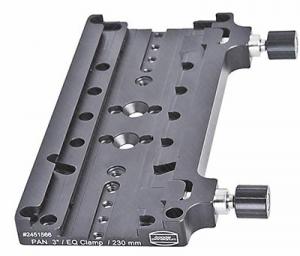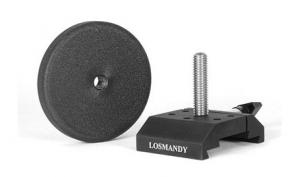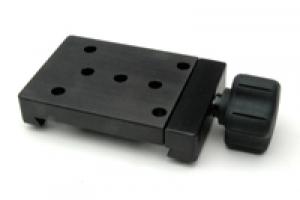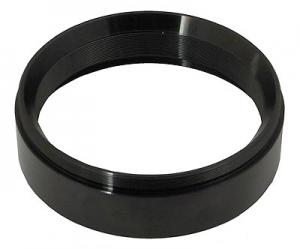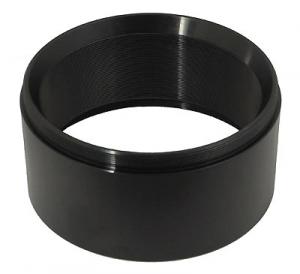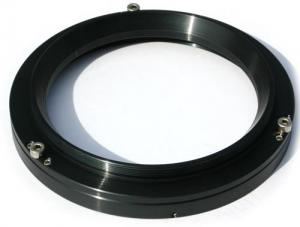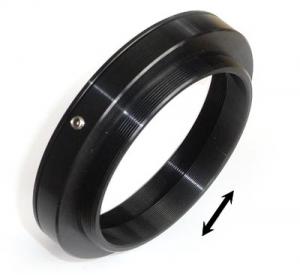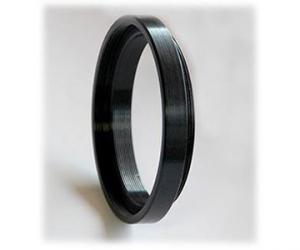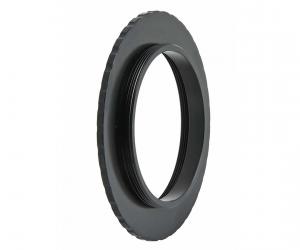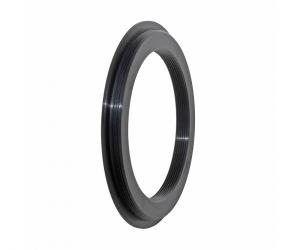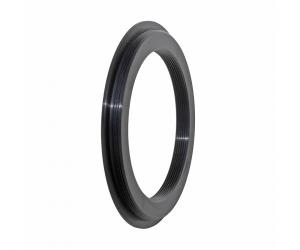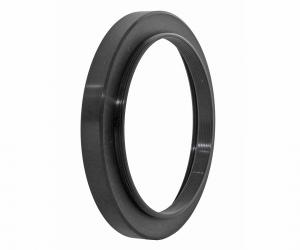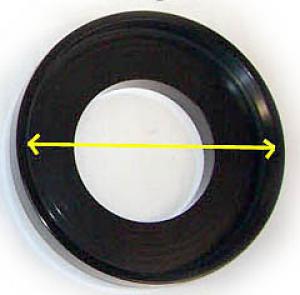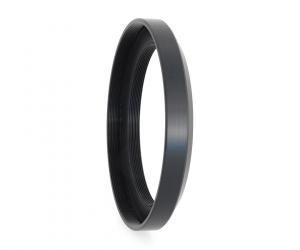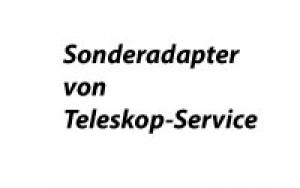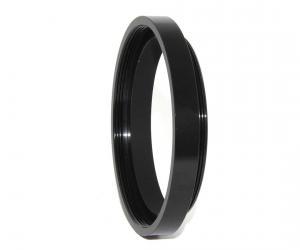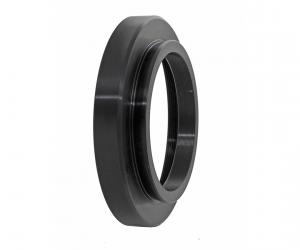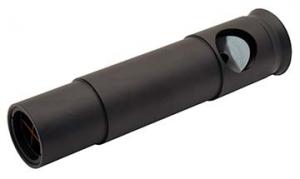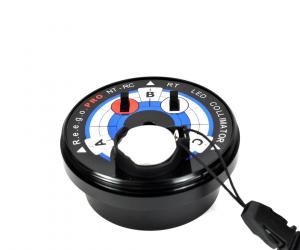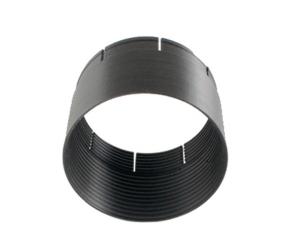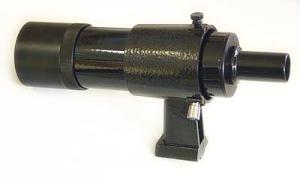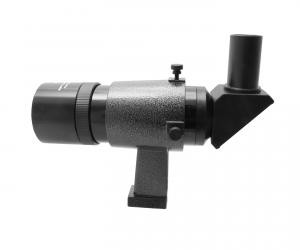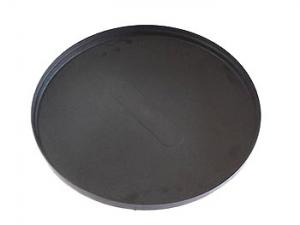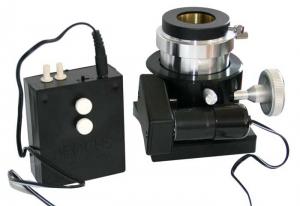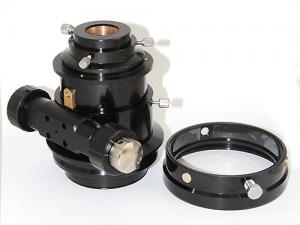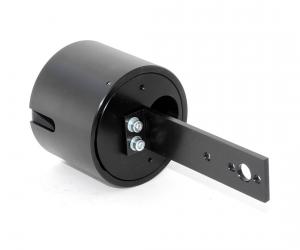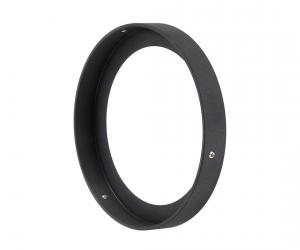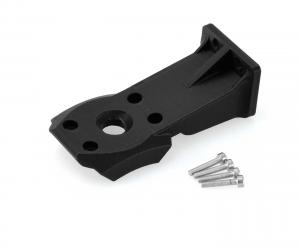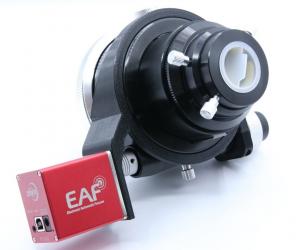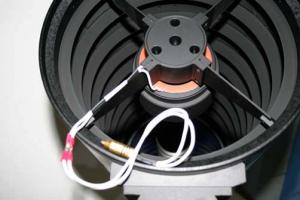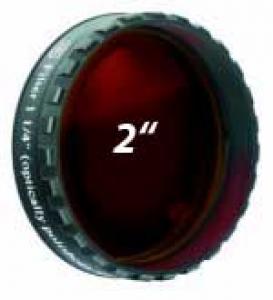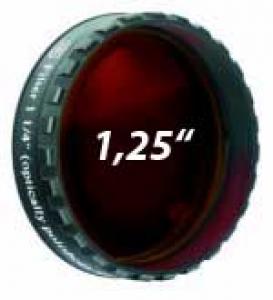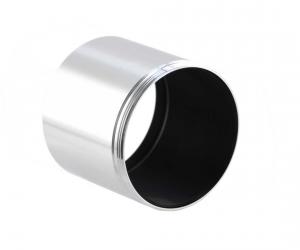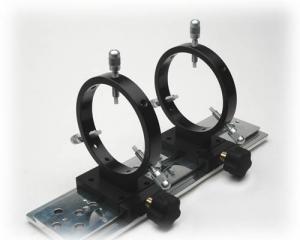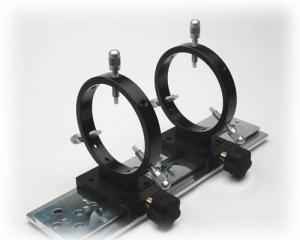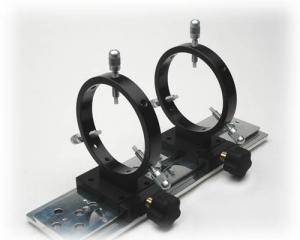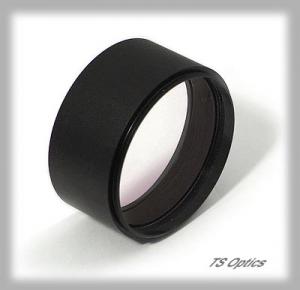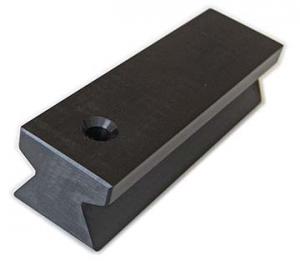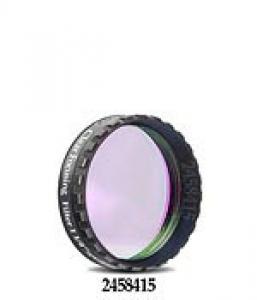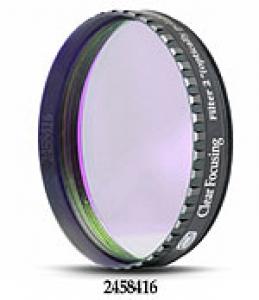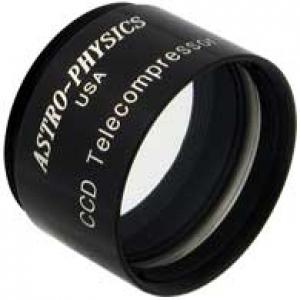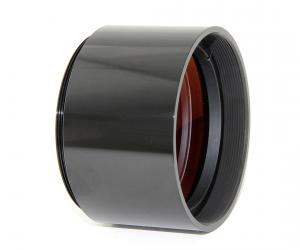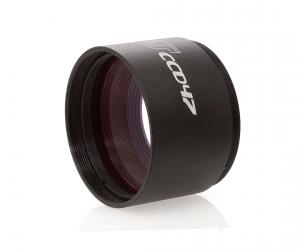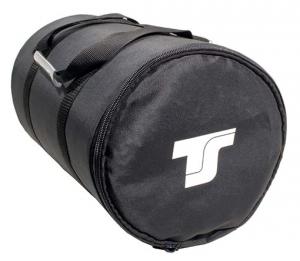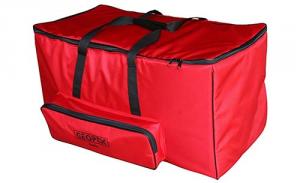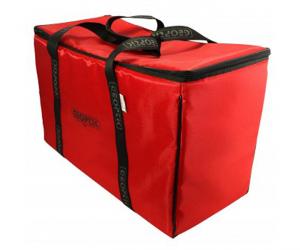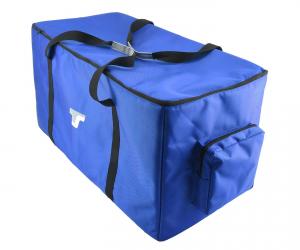- Telescopes
- Overview:
Telescopes - Achromatic Refractor
- Apochromatic Refractor
- Overview:
Apochromatic Refractor - ED Refractor - less color aberration than an achromatic
- SD APO - color free 2-element APO objective
- EDT APO - 3 element ED objective
- High End APO with 3-element APO objective - no color aberation
- Flatfield APO with flat field for Astrophotography
- All Apos and EDs from all manufacturers - large overview
- TS APO and ED from Japan with high quality optics
- Overview:
- Newtonian Telescopes
- Dobsonian Telescopes
- RC Ritchey Chretien Telescopes
- Casssegrain Telescopes
- Reflektor Telescopce with Lens Correcture
- Maksutov Cassegrain Telescopes
- GoTo Telescopes
- Solar Telescopes H-Alpha
- Overview:
- Mounts Tripods Rings Rails Power Supply ...
- Overview:
Mounts Tripods Rings Rails Power Supply ... - Mounts Equatorial with GoTo
- Mounts Equatorial without GoTo
- Mounts Azimutal with GoTo
- Mounts Azimutal without GoTo
- Mounts GoTo - Harmonic Drive
- Travel mounts for astro imaging
- Tripods Piers Polar Wedges
- Mount Control & Electronics
- Dovetail Clamps, Plates and Mount Adapters
- Tube Rings
- Power Supply
- Counterweights Balance Weights
- Mount Accessories - Other
- Overview:
- Telescope Accessories
- Overview:
Telescope Accessories - Eyepieces
- Barlows & Reducer Lenses
- Diagonal Mirrors and Prisms
- Binocular Viewers
- Finder Scopes
- Telescope Collimation and Test
- Cleaning Tools
- Transport and Storage
- Dust protection for Telescopes & Accessories
- Stray Light Protection
- Dewcaps and Heater
- Focusers, Adapters, Motorfocus
- Telescope DIY & Improvement
- Other telescope accessories
- Replacement Parts
- Overview:
- Filters
- Overview:
Filters - Color Filters and Color Filtersets
- Nebular Filters for Visual Observing
- Neutral-Density and Polfilter
- Photo Narrowband Nebular Filters
- Photo Broadband Filters
- Photo Planetary Filters
- Photo R-G-B and IR Cut Filters
- Photo - Filtersets
- Photometric Filters
- Clip Filter for DSLR Cameras
- Filter Wheels and Filterslider
- Solar Filters for white light
- Solarfilter for H-Alpha and Calcium
- Overview:
- Adaptors
- Overview:
Adaptors - Adapter 1,25" and 24,5mm
- Adapter 2"
- Adapter T2 - M42x0.75
- Adapter M48x0,75
- Adapter M54
- Adapter SC
- Adapter M63
- Adapter M68
- Adapter to other Threads
- Adapter Extensions
- Adapter camera bayonet
- Adapter Objective Filterthread
- Adapter Quick Changing , Rotation
- Adapter Eyepiece Projection
- Adapters Tilting
- Overview:
- Astrophotography and Photography
- Overview:
Astrophotography and Photography - Cooled Cameras
- Cameras without Cooling
- Deep-Sky Cameras uncooled
- Set-Offers Camera, Filter, Wheels
- Acessories for Cameras
- Travel mounts for astro imaging
- Imaging Correctors for Telescopes
- Autoguiding Cameras & Sets
- Everything for Guiding
- Focusing aids - Bahtinov mascs
- Flat Field foils and boxes
- Lenses for Cameras
- Piggyback Camera Holder
- Camera Bags, Photocases & more
- Digital Camera and Smartphone Adapter
- Other photo accessories
- Overview:
- Binoculars, Spotting Scopes, Microscopes, Range Finders
- Overview:
Binoculars, Spotting Scopes, Microscopes, Range Finders - Spotting Scopes and Acessories
- Roof Prism Binoculars
- Binoculars with Porro prisms
- Binoculars from 100mm Aperture
- Binoculars with 1,25 inch eyepieces
- TSMX APO Binoculars
- Binoculars for Astronomy
- Binoculars Hiking Bird watching
- Monoculars - Opera Binoculars
- Accessories for Binoculars
- Range Finders
- Microscopy
- Bags for Phototripods & Binoculars
- Overview:
- Phototripods and Binomounts
- Books, Software
- Overview:
Books, Software - Books for Astronomy Beginners
- Star Charts and Planispheres
- Books about our Solar System
- Observing Tips for Amateurs
- Popular Astronomy Literature
- Teaching material
- Astrophotography books
- Telescopes, Observatories, Construction
- Calendars Yearbooks
- Software, Star Charts
- Books for Microscopers
- Books Nature and Animals
- Nature Photography TimeLapse
- Overview:
- Night Vision, Magnifiers, Weather, Domes & more
- Beginner Astronomy and Gift Ideas
- Second Hand & Special Offers
- New products
Manufacturer: -TS Teleskope
Product number: GSRC10C
EUR3299.00new
EUR 3.299,00RRP EUR 3.499,00you save 5.7% (EUR 200,00)
incl. 19 % VAT (DE)
The VAT indicated refers to that applicable in Germany. After logging in, the VAT amount is adjusted to the applicable VAT of the stored delivery country. Therefore, the final price may vary accordingly.
excl. 45.95 € shipping costs (DE)
more details to the shipping costs ...Please log in to calculate shipping costs to your country.
Product expected to be available from 15.02.2026
There are no reviews for this product
- Details..
- Technical data..
- In the box..
- Reviews..
- Download..
- Manufacturer infos..
- Safety informations..
TS-Optics 10" f/8 RC Ritchey-Chrétien Telescope with Carbon Tube
Most large professional telescope are constructed according to the RC principle. Until recently, these telescopes were unaffordable for amateurs. RC telescopes from Teleskop-Service are primarily aimed to amateur astronomers with photographic interest. These telescopes are perfectly suited for high-resolution astrophotography. Of course, an RC can also be used for visual observing. Here, the large corrected field of view is noticeable, too. In total, the stars are sharper than, for example, in a Schmidt-Cassegrain.The advantages of the TS-Optics RC Telescopes at a glance:
Astrophotography with the RC telescope:
Due to the large corrected field of view, you can, for example, use a DSLR up to APS-C format without corrector. Thus the RC is a pure mirror system for astrophotography. The images become ultrasharp. For imaging dirctly in the focus, you will need the M117x1 extension tubes which are supplied. They are threaded between telescope and focuser, thus reducing back-focus.The generous back-focus also allows attaching correctors which we recommend when using sensors of at least full-frame size. You can also attach a focal reducer, thus further increasing the speed of the RC.
You can connect the camera via 2" receptacle or thread it via the M77x0.75 female thread on the extension tube and M74x0.75 male thread of the focuser. Suitable adapters can be found in the accessories section.
Astrophotographic results obtained with this telescope on Astrobin
The RC telescopes are very well suited for astrophotography. Here you can find some astrophotographs made with this telescope model: Link to Astrobin
0.67x CCD reducer for astrophotography
The CCD47 improves the focal ratio from f/8 to f/5.36, thus reducing the exposure time to less than 50%. With this, you can capture dim nebulae and galaxies with moderate exposure times.The advantages of a carbon tube over a metal tube:
The weight reduction is minimal - only about 500 grams - the main advantage ist the focus stability when temperature changes. That is important for astrophotography. When temperatures drop, metal contracts and the focus moves. Refocusing is necessary. A carbon tube does not change, the combination of quartz glass mirror and carbon composite tube makes a readjustment of the sharpness obsolete, even for long time exposures.The 3" MONORAIL focuser - more than a Crayford:
 The Monorail focuser combines the ease of movement of a Crayford focuser with the stiffness of a rack-and-pinion focuser. Thus astrophotography becomes a success.
The Monorail focuser combines the ease of movement of a Crayford focuser with the stiffness of a rack-and-pinion focuser. Thus astrophotography becomes a success.Primary and secondary mirror of quartz glass with 94% enhanced reflectivity:
Quartz glass does not change its dimensions if temperature changes. When the temperature changes slowly during an exposure, other mirror substrates, like Pyrex, tend to a deformation of the mirror and thus to a shift of the focus. This problem does not exist for mirrors of quartz glass. Thus the focus is better maintained which is very important for long exposures. Both mirrors are coated with 94% reflectivity. The image is obviously brighter than the one of telescopes with only 90% reflection layer.The advantages of TS RC telescopes for astrophotography:
The TS RC astrographs are true Ritchey-Chrétien telescopes. Maksutovs and Schmidt-Cassegrains have spherical mirrors and need correctors for making a large field usable. With Schmidt-Cassegrains, you can see the aberrations in the field even when working visually. Most times, Maksutov-Cassegrains are so slow that they are not suitable for astrophotography. RC telescopes have hyperbolical primary and secondary mirrors. They are more difficult to manufacture, but offer a significantly sharper field with less aberrations throughout the field.Why is the RC Telescope superior to Schmidt-Cassegrain telescopes with correctors:
Celestron EHD or Meade ACF telescopes need a corrector. Additionally, these telescopes have a Schmidt plate at the front side which is prone to dew. The RC is a pure reflection system without lenses in the light path. Thus you can use the complete light even in the infrared range. The image is brighter and the exposure times get shorter. The field of an RC telescope is coma-free by design and relatively flat.No shifting problem with TS RC telescopes:
Telescopes with focusing via movable primary mirror often suffer from the shifting problem. The image shifts while focusing or even jumps. By now, Meade and Celestron have the problem under control, but the effect is noticable nonetheless. TS RC telescopes do not have this problem, as their primary mirror is fixed. Focusing is done via a high-quality focuser. An additional advantage is the optimal distance from primary to secondary mirror. This gives you the guarantee of the best possible image. If the primary mirror moves relatively to the secondary, you will practically never have the optimal distance.Video with information about RC telescopes
On our YouTube account you will find a video about the characteristics of the Ritchey-Chrétien telescopes in general and the features of the GSO RCs in particular, as well as suggestions for accessories:Adjusting the RC telescope
We recommend the TSRCKOLLI or an collimating telescope for adjusting the telescope. These tools are linked in the "Cleaning & Collimating" section.Instruction video
Teleskop-Service has created an instruction video about collimating an RC telescope:| Optical design: | True RC with a hyperbolic primary and secondary mirror. |
| Aperture: | 10" / 250 mm |
| Focal length: | 2000 mm |
| Focal ratio: | f/8 |
| Resolution: | 0.46" |
| Reflectivity: | 94% enhanced reflectivity |
| Back focus: | 250 mm from tube backplate |
| Focuser: | 3" MONORAIL focuser with 2" / 1.25" reduction adapter |
| Connection at eyepiece side: | 2" and 1.25" |
| Additional threads: | M77x0.75 female thread on the extension tube and M74x0.75 male thread |
| Tube diameter: | 294 mm |
| Tube length: | 735 mm with focuser |
| Weight: | 14.6 kg |
| Total obstruction by secondary: | 112 mm |
| Dovetail bars: | 2x Losmandy style |
| Tube: | Carbon tube with internal baffles |
Astrophotographic results obtained with this telescope on Astrobin
The RC telescopes are very well suited for astrophotography. Here you can find some astrophotographs made with this telescope model: Link to AstrobinM1 Crab Nebula - 10" RC by TS - no correktor - Wolfi Ransburg

he photograph shows the full field with the ATIK 4000
M76, captured with the TS 10" Ritchey-Chrétien
a first test shot, captured under slightly adverse conditions (bad seeing, crescent moon, suburb east of Munich)
Instrument: TS 10" RC
Camera: ATIK 4000
LRGB - 30 min luminance and 30 min RGB
(c) by Wolfi Ransburg
Results of a customer
Our customer Matthias Krieger has taken some nice pictures with this telescope, which we would like to share with you: Object: NGC 3199
Object: NGC 3199Photographer: Matthias Krieger
Location: Rental observatory in the Kalahari (Namibia)
Imaging telescope: TS-Optics GSO 10" Ritchey-Chrétien Pro RC telescope 254/2000 mm carbon tube (GSRC10C)
Focuser: PrimaLuce ESATTO 3" Motorized Microfocuser (PLLEST3-B)
Field corrector: TS-Optics RC 0.8x Corrector Reducer for Ritchey-Chrétien - Full Frame - M68 (TSRCRED)
Filter: IDAS NBZ Duo Filter for O-III, H-alpha (NBZ-49)
Imaging camera: ZWO ASI 6200MC Pro (ASI6200MCPRO)
Mount: AstroPhysics 1200GTO
Off-axis guider: TS-Optics Off Axis Guider with ZEISS M68x1 thread connection (TSOAGM68)
Guiding camera: ZWO ASI 290 MM (ASI290MM)
 Object: Gum 39
Object: Gum 39Photographer: Matthias Krieger
Location: Rental observatory in the Kalahari (Namibia)
Imaging telescope: TS-Optics GSO 10" Ritchey-Chrétien Pro RC telescope 254/2000 mm carbon tube (GSRC10C)
Focuser: PrimaLuce ESATTO 3" Motorized Microfocuser (PLLEST3-B)
Field corrector: TS-Optics RC 0.8x Corrector Reducer for Ritchey-Chrétien - Full Frame - M68 (TSRCRED)
Filter: IDAS NBZ Duo Filter for O-III, H-alpha (NBZ-49)
Imaging camera: ZWO ASI 6200MC Pro (ASI6200MCPRO)
Mount: AstroPhysics 1200GTO
Off-axis guider: TS-Optics Off Axis Guider with ZEISS M68x1 thread connection (TSOAGM68)
Guiding camera: ZWO ASI 290 MM (ASI290MM)
 Object: NGC 3579
Object: NGC 3579Photographer: Matthias Krieger
Location: Rental observatory in the Kalahari (Namibia)
Imaging telescope: TS-Optics GSO 10" Ritchey-Chrétien Pro RC telescope 254/2000 mm carbon tube (GSRC10C)
Focuser: PrimaLuce ESATTO 3" Motorized Microfocuser (PLLEST3-B)
Field corrector: TS-Optics RC 0.8x Corrector Reducer for Ritchey-Chrétien - Full Frame - M68 (TSRCRED)
Filter: IDAS NBZ Duo Filter for O-III, H-alpha (NBZ-49)
Imaging camera: ZWO ASI 6200MC Pro (ASI6200MCPRO)
Mount: AstroPhysics 1200GTO
Off-axis guider: TS-Optics Off Axis Guider with ZEISS M68x1 thread connection (TSOAGM68)
Guiding camera: ZWO ASI 290 MM (ASI290MM)
Congratulations to our customer for the impressive images!
| Manufacturer / Importeur: | Teleskop-Service Ransburg GmbH |
| Street: | Von-Myra-Str. 8 |
| ZIP / City: | 85599 Parsdorf |
| Country: | germany |
| Telefon number: | +49 89 99228750 |
| Email: | info@teleskop-service.de |
| Website: | www.teleskop-express.de |
Safety informations: PDF Download
Recommended accessories
Accessories for mounts
Used Losmandy FDA - Adapter plate for 3" dovetail bars
EUR 49,00RRP EUR 95,00you save 48.4% (EUR 46,00)
Adaptation Suggestion
Adaptors
TS-Optics 25 mm Extension Adapter for M117x1 thread
EUR 39,00RRP EUR 79,00you save 50.6% (EUR 40,00)
TS-Optics 50 mm Extension Adapter for M117x1 thread
EUR 59,00RRP EUR 85,00you save 30.6% (EUR 26,00)
TS-Optics M117x1 Tilting Adapter Flange for astrophotography
EUR 99,90RRP EUR 139,00you save 28.1% (EUR 39,10)
Alternatives to this product - Suggestions from TS
Cleaning & Collimating
Customers who bought this product also bought...
Finder & Accessories
TS-Optics 8x50 Finder - straight view, black colour and with adjustable bracket
EUR 69,00RRP EUR 89,00you save 22.5% (EUR 20,00)
TS-Optics 8x50 Finder - with Bracket - black colour - 90° angled
EUR 98,00RRP EUR 109,00you save 10.1% (EUR 11,00)
General Accessories
Rigel nFocus Motorfckus for GSOl 2" and 3" Focusers
EUR 149,00RRP EUR 185,00you save 19.5% (EUR 36,00)
Astroprints mounting kit for ZWO EAF motor focus on Monorail 3" focuser, Gen II
EUR 80,00RRP EUR 89,90you save 11% (EUR 9,90)
ZWO EAF focus motor with USB-C connection for power supply and data transfer
EUR 239,00RRP EUR 257,00you save 7% (EUR 18,00)
Photo Acessories
TS-Optics Adapter from 2" Receptacle to the SC Thread
EUR 19,00RRP EUR 24,00you save 20.8% (EUR 5,00)
Farpoint 108 mm guide scope rings with clamp for 3" dovetail bars
EUR 229,00RRP EUR 245,00you save 6.5% (EUR 16,00)
TS-Optics camera holder for finder shoe, with 1/4" screw
EUR 29,50RRP EUR 34,90you save 15.5% (EUR 5,40)
Transport & Covers
TS-Optics Transport Bag for 10" and 11" Schmidt-Cassegrain & 10" RC Telescopes
EUR 119,98RRP EUR 139,00you save 13.7% (EUR 19,02)
Reviews












